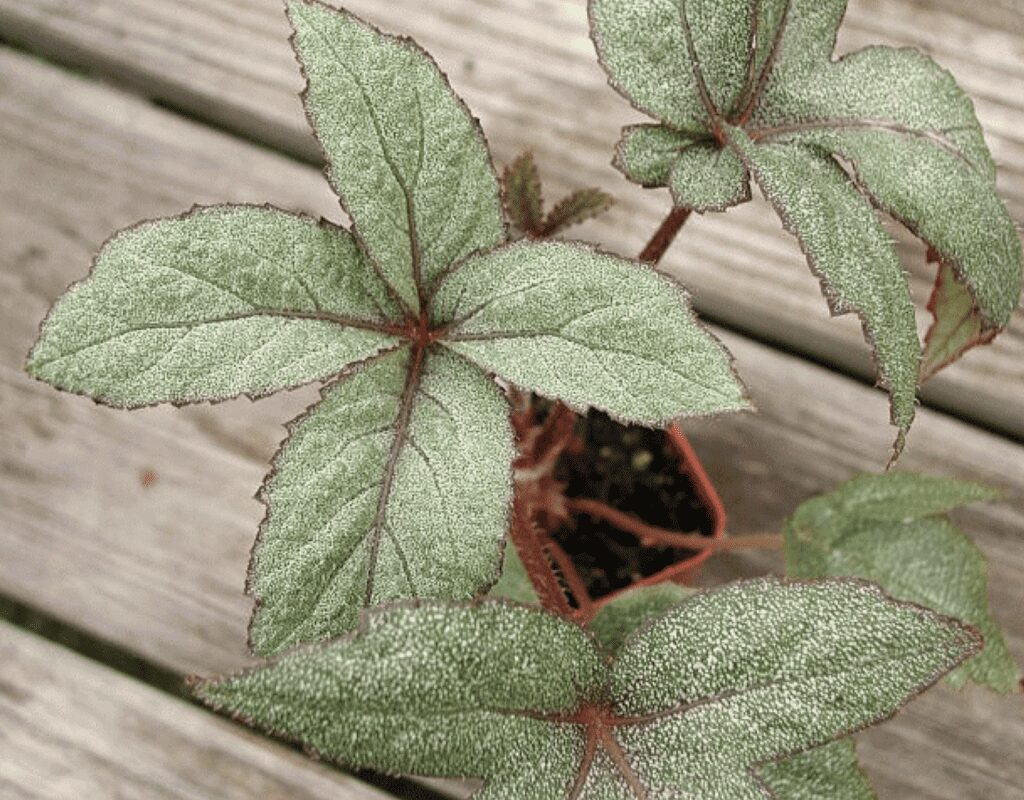B. ‘Pollux’ is a rex, jointed at or below the soil with erect stems. The foliage is a stippled silver and is quite attractive. It was hybridized in 1994 in Japan by Yamaguchi. Only in the last few years, however, has it made its way into the United States.
B. ‘Pollux’ is the result of a three-way cross between B. hemsleyana X (B. circumlobata x B. ‘The Chief’).
B. hemsleyana is rhizomatous with the rhizome jointed at or below the soil level, with erect stems (which accounts for the growth habit of B. ‘Pollux.’ B. hemsleyana has palmate leaves. B. circumlobata is also rhizomatous with large compound leaves.
The two species “parents” are from China and discovered back in the late 1800s. The Thompsons, in their book BEGONIAS: The Complete Reference Guide, state that both are ‘For the Collector.’ No information was found about B. ‘The Chief,’ but my hunch is that it is a rex and accounts for the leaf shape and color.

Given that the two species parents have pink flowers, as do the majority of rexes, B. ‘Pollux’ probably flowers pink in the late fall or winter.
The most mature plant I have observed was 15″ to 18″ high and filled an eight- inch pot. The largest leaves on this plant were about two inches long and about as wide.
B. ‘Pollux’ needs very high humidity and so must be grown in either a greenhouse or terrarium. It can be started from either a leaf or stem cutting.
As with many rexes and upright rhizomatous types, this plant is very susceptible to mildew and should be grown with an active anti-fungal program.

